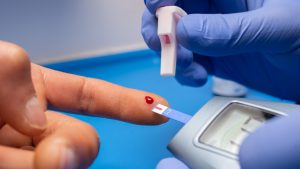As we step into a new year, the possibilities for growth, learning, and improvement are endless. For people living with diabetes, a well-crafted guide can provide clarity and direction, helping to create a balanced, fulfilling life. Here, we present a detailed roadmap to make 2025 your best year yet, blending cutting-edge strategies with timeless advice.
1. Embrace the Latest Technology
Advancements in technology have revolutionized diabetes management. Here’s how you can take advantage:
Continuous Glucose Monitoring (CGM): Explore the latest CGM devices that offer more accurate readings, smaller sensors, and real-time data sharing. Features like trend alerts can help prevent highs and lows before they occur.
Smart Insulin Pens and Pumps: Many devices now integrate with mobile apps to provide dosing recommendations based on carb intake and glucose levels.
Health Apps and Wearables: From fitness trackers that monitor activity to meal-planning apps tailored for diabetes, leveraging these tools can simplify your daily routine.
2. Rethink Nutrition
Nutrition is the cornerstone of diabetes care. In 2025, consider adopting these trends:
Personalized Diets: Advances in nutrigenomics can help tailor diets based on your genetic makeup, optimizing your body’s response to food.
Microbiome-Focused Eating: Research shows a healthy gut microbiome impacts glucose control. Include fermented foods, fiber-rich vegetables, and probiotics in your meals.
Flexible Meal Plans: Apps that calculate carb content and provide substitution options can simplify decision-making and keep meals exciting.
3. Optimize Physical Activity
Physical activity isn’t just about maintaining weight; it’s also key to better glucose control. Try these approaches:
Short Bursts of Exercise: Studies show that high-intensity interval training (HIIT) improves insulin sensitivity in less time than traditional workouts.
Integrated Movement: Incorporate more movement into your day, like standing during calls or taking short walking breaks.
Custom Plans: Work with a fitness professional familiar with diabetes to design a program that suits your preferences and goals.
4. Prioritize Emotional Well-Being
Living with diabetes can be emotionally challenging. Here are strategies to maintain balance:
Mindfulness Practices: Activities like meditation, yoga, or journaling can reduce stress and improve decision-making.
Support Networks: Engage with online communities, support groups, or a counselor specializing in chronic conditions.
Set Realistic Expectations: Focus on progress, not perfection, and celebrate small victories.
5. Schedule Regular Check-Ins
Stay proactive by maintaining open communication with your healthcare team. Regular check-ups can help fine-tune your management plan, incorporating new treatments or adjustments as needed. Keep an eye on metrics like:
HbA1c levels
Blood pressure
Lipid profiles
6. Explore New Treatment Options
2025 is set to bring innovative treatments:
Novel Medications: Advances in GLP-1 receptor agonists and SGLT-2 inhibitors are showing promise for both blood sugar control and cardiovascular health.
Artificial Pancreas Systems: Emerging closed-loop systems are providing near-autonomous glucose management.
Regenerative Medicine: Stay informed about developments in beta cell replacement therapies and other cutting-edge research.
7. Plan for Success
Set yourself up for success with practical planning:
Create a Diabetes Management Toolkit: Include essentials like a glucose meter, snacks for low blood sugar, and a list of emergency contacts.
Establish Routines: Consistency in meals, exercise, and medication can make daily management easier.
Track Your Progress: Use apps or journals to monitor patterns and identify areas for improvement.
8. Focus on Long-Term Goals
Look beyond daily management to build a vision for your future:
Financial Planning: Factor in diabetes-related expenses and explore insurance options or assistance programs.
Educational Opportunities: Stay informed by attending workshops, webinars, or conferences about diabetes care.
Advocacy and Community: Consider joining initiatives to raise awareness and support for diabetes-related causes.
Your Best Year Yet
Living well with diabetes in 2025 is about embracing tools, resources, and habits that empower you. With the right mindset and strategies, you can navigate challenges and celebrate achievements. Remember, every small step adds up to significant progress.
Here’s to a year filled with health, happiness, and success! 🌟

Type 2 Diabetes: Is It Really Reversible?
A recent National Geographic article [link] explores how type 2 diabetes could be reversible with the right approaches. This condition, which affects millions of people worldwide, has long been considered a chronic and progressive disease. However, recent research challenges this perception and suggests that with lifestyle changes and the right approach, remission is possible. The

How Do GLP-1 Drugs Compare? A Breakdown of Ozempic, Mounjaro, and Trulicity
GLP-1 receptor agonists have revolutionized diabetes management, with drugs like Ozempic, Mounjaro, and Trulicity leading the market. But how do these medications compare in terms of effectiveness, side effects, and patient outcomes? Let’s explore their differences and what they mean for diabetes patients. Understanding GLP-1 Medications GLP-1 receptor agonists mimic a natural hormone that helps

Why Has Medicare Spending on Diabetes Medications Skyrocketed in 5 Years?
In the past five years, Medicare spending on diabetes medications has increased nearly fivefold, reaching $35.8 billion in 2023. This surge has been primarily driven by the growing use of GLP-1 drugs such as Ozempic, Mounjaro, and Trulicity. But what is behind this cost escalation, and how does it affect patients and the U.S. healthcare

The Gut Microbiota and Blood Sugar Control: A Hidden Connection
The human gut is home to trillions of bacteria that play a crucial role in digestion, immune function, and even metabolism. Recent research has revealed a fascinating link between the gut microbiota and blood sugar regulation, shedding light on how the balance of microbes in our intestines can influence diabetes risk and overall metabolic health.

The Dawn Phenomenon: Why Blood Sugar Rises While You Sleep
For many people with diabetes, waking up with high blood sugar levels can be frustrating—especially if they didn’t eat anything overnight. This early-morning spike in blood glucose is known as the Dawn Phenomenon, and it happens due to natural hormonal changes in the body. But why does it occur, and how can it be managed?

The Influence of Red Light on Blood: Can It Improve Diabetes?
Type 2 diabetes is a metabolic disease characterized by insulin resistance and elevated blood glucose levels. In the search for complementary alternatives to improve glycemic control, red light therapy has gained attention due to its potential to enhance circulation, reduce inflammation, and optimize cellular function. But what does science say about it? ✨ What is

